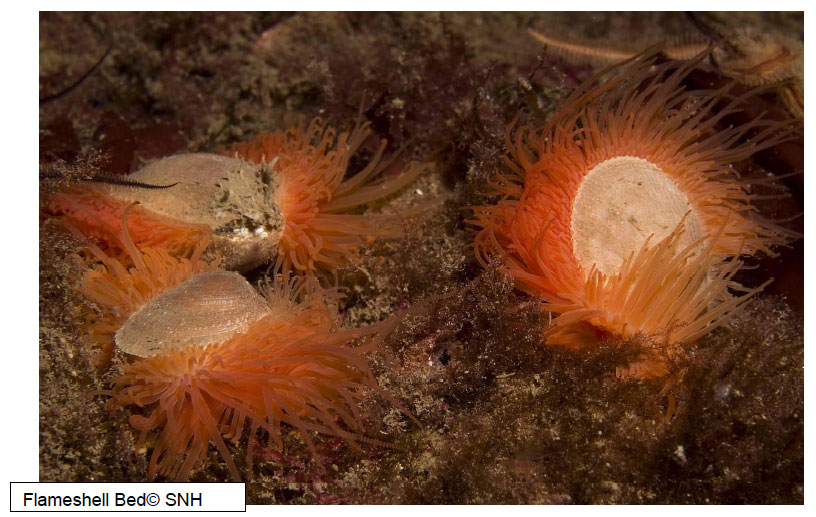Report to the Scottish Parliament on Progress to Identify a Scottish Network of Marine Protected Areas
This reports on which sites are currently included in the MPA network and outlines progress on Nature Conservation MPAs, Historic MPAs, and Demonstration and Research MPAs.
How will the network be managed
The general principles for management of Nature Conservation MPAs are derived from the Scottish MPA Selection Guidelines (Marine Scotland 2011) . The five principles listed below are those which relate directly to management:
1. Management of MPAs should be integrated with wider marine management. By providing the framework within which all marine management will occur, marine planning will help ensure better integration between the needs of Nature Conservation MPAs and those of surrounding areas.
2. In most situations, existing sectoral measures (such as fishery management measures) or marine planning are expected to be sufficient. Additional powers such as Marine Conservation Orders will be available where necessary to support management of activities affecting MPAs.
3. The best available scientific information will be used to select and manage Nature Conservation MPAs. Lack of scientific certainty should not be used as a reason for postponing MPA selection or taking action where there is a threat of damage to areas in the network.
4. As our understanding improves, and/or the environment changes, there may be a need to select additional new Nature Conservation MPAs, alter boundaries, and/or remove designations particularly in the longer term in response to climate change.
5. Nature Conservation MPAs will be subject to a range of protection levels, depending on the conservation objectives, management requirements of the MPA protected features for which they are designated and socio-economic factors. There will be an assumption of multiple-use of a site. However activities which are not compatible with the conservation objectives of a Nature Conservation MPA will be restricted.
MPAs will be managed to enable achievement of their conservation objectives. Conservation objectives will be produced for the protected features of all MPAs.
A risk-based approach to developing management options involves site-by-site consideration of the protected features, the conservation objectives, and the activities that take place in, adjacent to, or near the MPA. This will result in a management options paper for each site at consultation, detailing which activities may require some form of management to ensure conservation objectives are met.
The consideration of management at a site level will utilise the MPA toolkit in conjunction with discussions with stakeholders. The toolkit consists of all the documents, evidence, information and data to allow well-informed decisions about management requirements to be taken. In some cases the assessment may point to there being no requirement for specific site-based measures, or conversely indicate the need for a strict level of additional protection.
This process will provide opportunities for stakeholders to present their view, including their practical environmental knowledge and activity data. Stakeholders can contribute throughout this process as required through bi-lateral meetings, regional workshops and responding to formal consultation. The level of engagement for each MPA will depend on the complexity of the issues that need to be resolved.
The extent to which in the opinion of the Scottish Ministers the stated conservation objectives have been achieved are required to be reported on every six yearly cycle, and the most appropriate form of monitoring will be developed to inform this opinion on the MPAs. The results will also be used to inform future decisions on management of MPAs. Site-based measures may therefore change over time as our knowledge evolves with any new evidence being considered during the 6 year cycle as required.
Conservation Objectives
Conservation objectives describe the desired ecological/geological state (or quality) of the protected feature(s) within each Nature Conservation MPA. They will either be set to 'conserve' or 'recover' as described below.
A Conserve objective will be used:
- where evidence exists that a protected feature of an MPA is in good condition the conservation objectives are likely to propose that the feature is conserved;
- OR, where limited evidence exists and therefore there is uncertainty concerning the condition of a feature, then the conservation objective for that feature is also likely to be conserve and qualified to express this uncertainty. This will be determined on a case by case basis, especially for cases where there is limited evidence due to the rarity of a feature.
A Recover objective will be used where evidence exists that a specie or habitat of an MPA is declining and/or damaged, to the point where it is not considered to be in good condition.

Contact
There is a problem
Thanks for your feedback